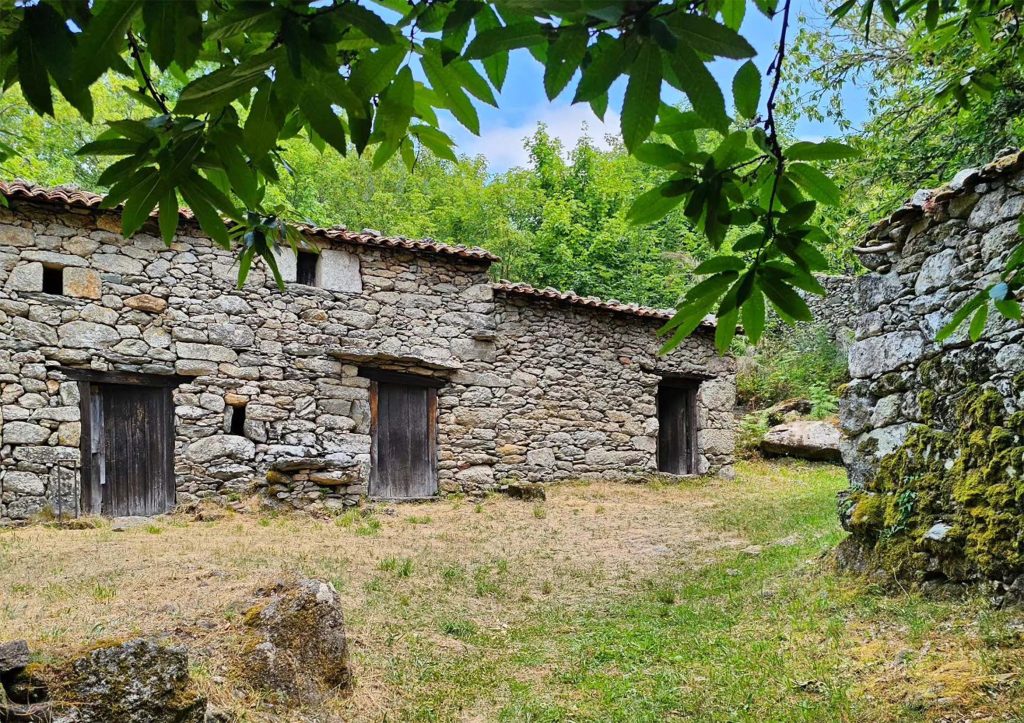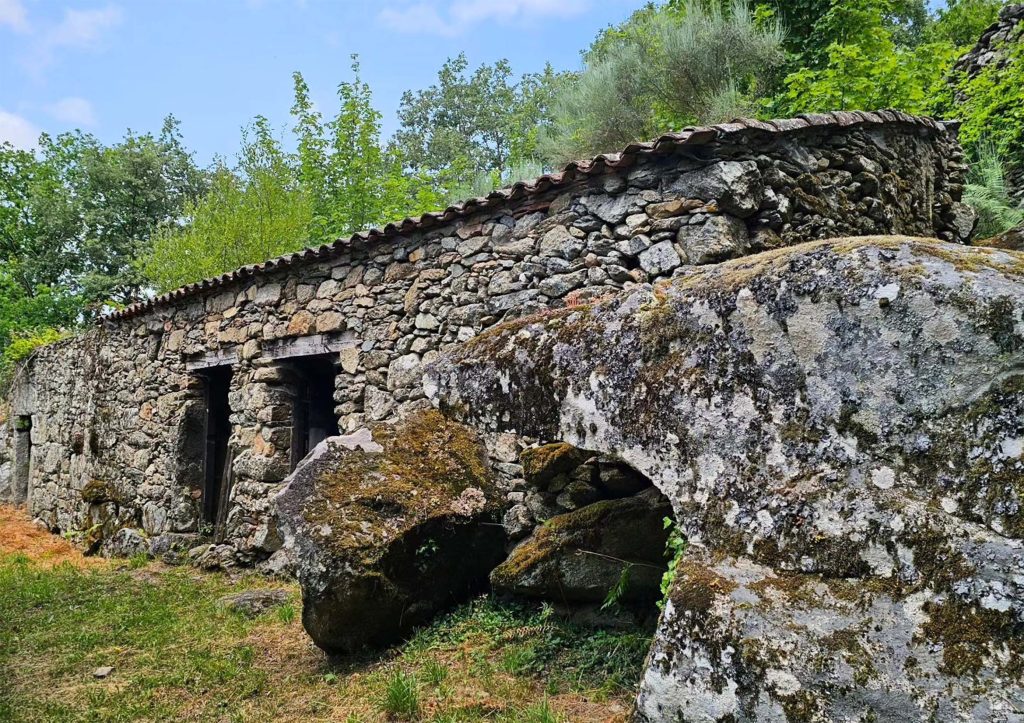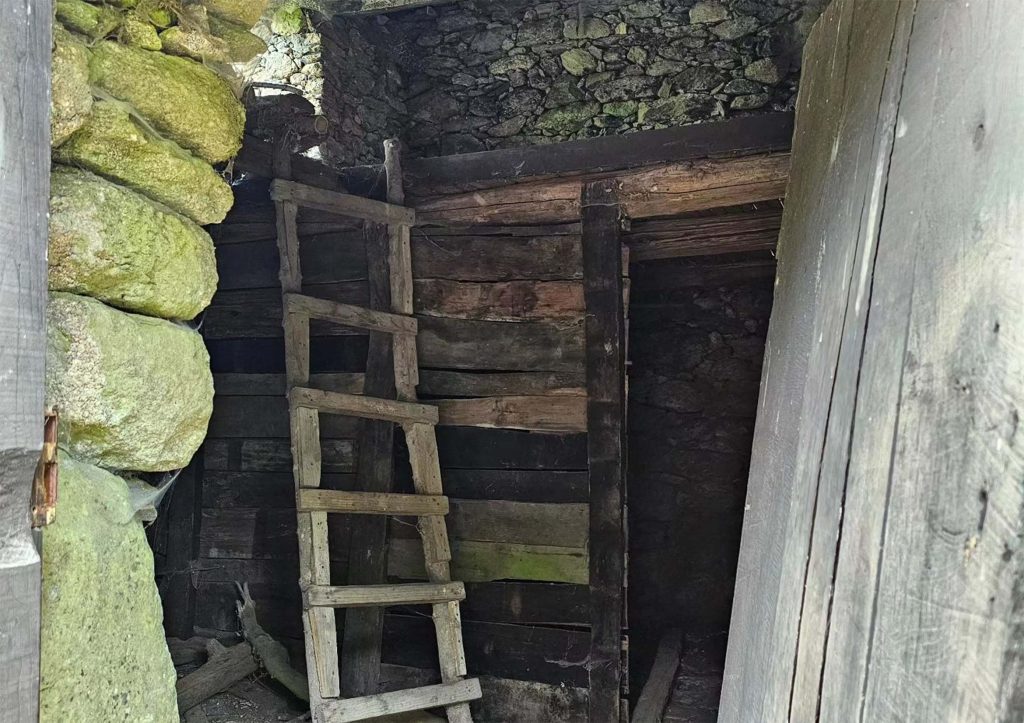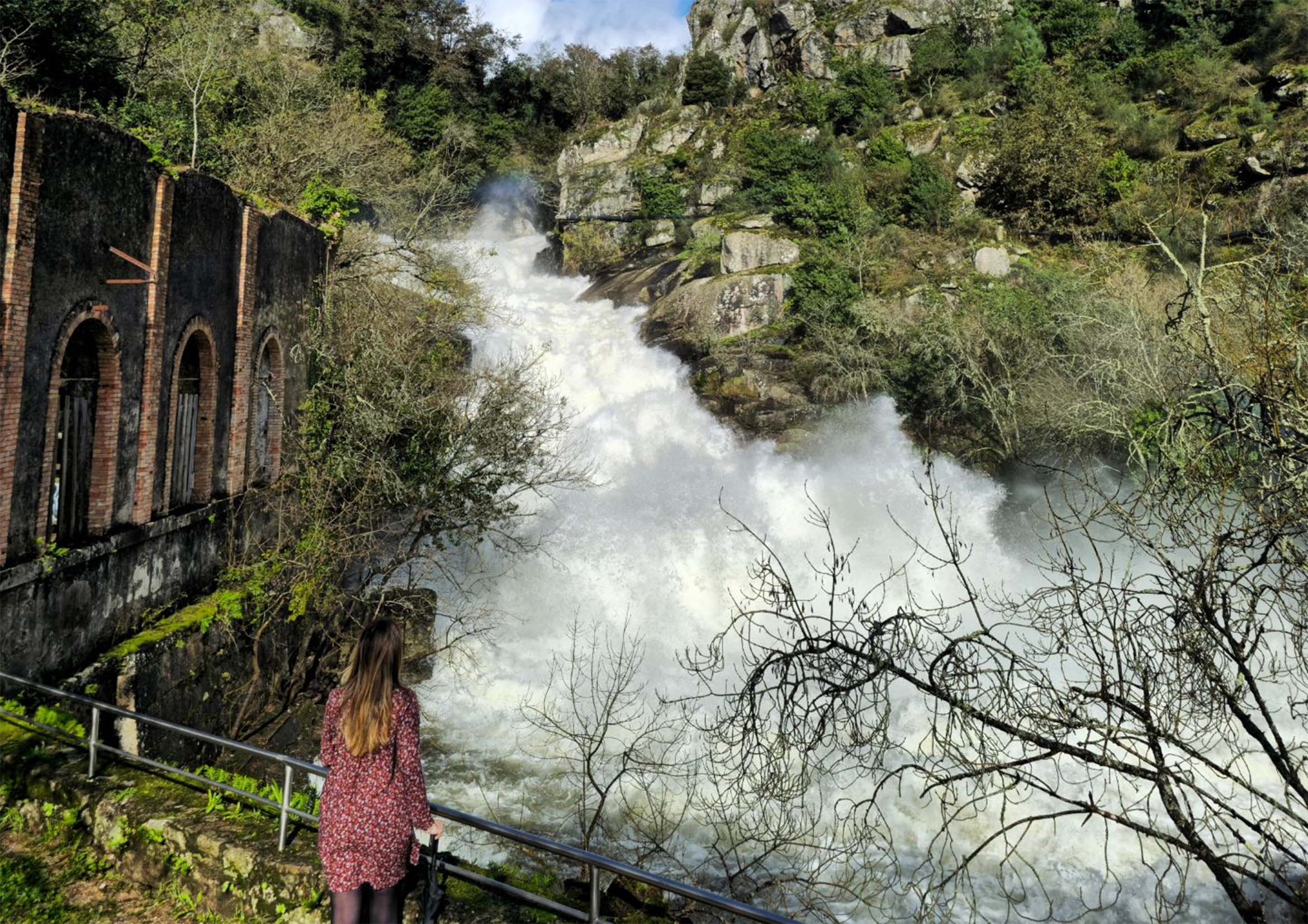As the morning sun cast its warm embrace over the Galician landscape, I found myself drawn to the Mirador de Ponte Navea, a place where the past and present converged in a dance of whispers. The breathtaking vista before me, with the remnants of an ancient Roman bridge and the sprawling fraga below, set the scene for a captivating odyssey through Ourense’s storied terrain.
The call to embark on this journey wasn’t a loud proclamation but a gentle whisper—a subtle beckoning that awakened the adventurer within. Standing at the mirador, I felt an electric surge of anticipation and curiosity, a recognition that I was on the threshold of something extraordinary. The trail ahead, marked only in part, invited me to step into the footsteps of those who had treaded these paths centuries ago.
Embarking on a Historical Odyssey:
The Mirador de Ponte Navea wasn’t just a scenic viewpoint; it served as the gateway to a historical odyssey. The landscape sprawled before me like a vast canvas, and the partially marked trail, once a vital artery known as the Vía Nova romana, promised a journey through the annals of time. Each step was a deliberate plunge into the rich history that lay beneath the rugged terrains of Ourense.
As I stepped onto the trail, anticipation and curiosity blended into a heady mix. The ancient path, once traversed by Roman legions and weary pilgrims, now beckoned me—a modern adventurer—to become part of its enduring story. The call echoed through the air, transcending the present moment and inviting me to immerse myself in the cultural and historical tapestry of Ourense.
Echoes of Roman Footprints:

The initial steps along the partially marked trail were not merely a walk; they were a communion with the echoes of Roman footprints. The Vía Nova romana, a lifeline connecting the ancient cities of Braga and Astorga, unfolded as a tangible link to the past. The trail, now softened by centuries of nature’s reclamation, retained an aura of grandeur that whispered tales of conquests, trade, and the passage of countless souls.
Navigating the partially marked path demanded not only a watchful eye but an imaginative mind capable of conjuring the scenes of a bygone era. The stones beneath my feet seemed to carry the weight of history, and the verdant surroundings resonated with the cadence of ancient footsteps. It was as if the trail had preserved the essence of a time when the Roman Empire’s influence coursed through these very veins.
The Chapel’s Silent Narrative:
Amidst the ancient pathways and verdant canopies, the Chapel of the Encarnación stood as a silent sentinel, a keeper of tales etched into its stone walls. Its unassuming facade, weathered by time, held within it the echoes of history—whispers that unfolded as I approached, creating a sacred pause in the midst of the natural symphony that surrounded it.
Modesty in Stone:
The chapel’s modest exterior belied the richness of the narratives it safeguarded. As I drew near, the intricacies of the stonework became more apparent, each weathered contour telling a story of centuries gone by. The humble architecture, typical of structures rooted in the historical tapestry of Ourense, stood in contrast to the grandeur of its natural surroundings. It was a testament to the harmony between human endeavor and the enduring landscapes that cradled it.
Roman Echoes in Stone:

The chapel’s significance deepened as I delved into the historical layers embedded in its foundation. Tradition held that the Chapel of the Encarnación occupied the sacred ground where an ancient Roman temple once stood. The subtle integration of Roman remnants into Christian sanctity painted a vivid picture of the evolving narratives that unfolded along these ancient trails.
Standing before the chapel, I felt a profound connection to the pilgrims and travelers of yesteryears. The convergence of pagan and Christian histories in this quiet enclave symbolized the transformative nature of the landscapes, where each era left its imprint on the stones beneath my feet.
The Maltese Cross: A Spiritual Pilgrimage:
A closer inspection of the chapel’s exterior revealed a poignant detail—a Maltese cross delicately etched into the weathered stone. This symbol, synonymous with pilgrimage and spiritual journeys, added a layer of depth to the trail. As I traced the contours of the cross with my fingers, it felt like a tactile link to the pilgrims who had sought solace, redemption, or simple communion with nature along these very paths.
The Maltese cross became a silent guide, inviting reflection on the interconnectedness of historical and spiritual quests. The trail, marked by this timeless symbol, ceased to be a mere physical passage; it transformed into a sacred journey—a pilgrimage through the chapters of Ourense’s cultural and spiritual heritage.
The Tranquility Within:
Stepping through the entrance, I found myself enveloped in a sanctuary of tranquility. The chapel’s interior, adorned with flickering candlelight and the soft scent of ancient stone, offered a respite from the rustling leaves and dappled sunlight outside. It was a space where time seemed suspended, allowing for quiet contemplation amidst the whispers of centuries.
The air within carried a palpable serenity—a testament to the reverence bestowed upon this sacred site by generations of pilgrims. The Chapel of the Encarnación, with its unassuming beauty, became a haven for introspection, a place where the threads of history and spirituality intertwined seamlessly.
Forest’s Witness, Chapel’s Guardian:

Surrounded by the lush embrace of the forest, the chapel appeared to be both a witness to nature’s cycles and a guardian of the narratives that unfolded within its walls. The ancient trees, their branches reaching skyward like silent sentinels, seemed to acknowledge the chapel as a custodian of the temporal conversations between humanity and the natural world.
As I sat within the chapel’s embrace, I imagined the countless souls who had sought solace within these sacred confines. The walls, adorned with the passage of time, became a mosaic of shared human experiences—a silent testament to the universality of seeking meaning and connection amidst the awe-inspiring landscapes of Ourense.
The Melody of Stillness:
In the heart of the forest, within the Chapel of the Encarnación, a melody of stillness played. The occasional rustle of leaves outside, the distant calls of birds, and the play of sunlight filtering through ancient windows composed a symphony that resonated with the spiritual energy of the place. It was a moment of communion, not just with the chapel but with the enduring spirit of Ourense’s historic landscapes.
In this sanctuary of stillness, time seemed fluid—an elusive concept woven into the fabric of the ancient stones. The chapel, with its unspoken stories and sacred ambiance, became a living testament to the harmonious coexistence of human reverence and the untamed beauty of the natural world.
The Departure, The Continuation:
As I stepped back into the sunlight, the Chapel of the Encarnación remained etched in my consciousness. The departure from its quiet embrace marked a continuation of the journey along the ancient trails. The whispers of Roman footprints, the spiritual resonance of the Maltese cross, and the tranquility within the chapel lingered, accompanying me as I resumed my exploration of Ourense’s timeless landscapes.
The Chapel of the Encarnación, standing amidst the convergence of histories, was more than a landmark along the trail; it became a metaphor for the enduring allure of Ourense. It symbolized the coexistence of diverse narratives, the seamless blending of ancient and contemporary, and the acknowledgment that every step along these trails was a pilgrimage—a sacred journey through time and nature.
Wandering Through Time:

The cobbled path of the Vía Nova led me deeper into the heart of Ourense’s natural grandeur. Dense forests embraced the trail, and charming bridges appeared as if from the pages of a fairy tale. The rhythmic cadence of my steps became a harmonious dance with history, and with every turn, I discovered a new facet of Asturias’ diverse landscapes.
The trail unfolded like a well-worn storybook, each chapter marked by a change in scenery. From the verdant embrace of ancient forests, I transitioned to the simplicity of ancient bridges, each step revealing the remarkable diversity that defines Ourense’s natural beauty. The landscapes became characters in the narrative, and I, the avid reader, absorbed the unfolding drama with every stride.
Ascending to Pena Folenche:
As the trail continued its ascent, weaving through the undulating terrain, the anticipation of reaching Pena Folenche became a steady undercurrent. The village, perched amidst stunning landscapes, promised a culmination of the journey’s physical and emotional dimensions.
The ascent to Pena Folenche wasn’t merely a climb; it was an elevation of the senses. The 360-degree view that unfolded at the village summit was a reward that transcended the physical exertion. The Navea and Bibei valleys sprawled beneath, Manzaneda stood as a majestic silhouette, and the distant Trevinca mountain added a touch of grandeur to the panorama.
The village, frozen in time yet pulsating with life, offered a glimpse into a rural existence that seemed untouched by the hands of modernity. The large rock formation at Pena Folenche, a geological marvel, became my personal vantage point—a throne from which I surveyed the surrounding beauty.
Challenges and Choices:
No adventure is without its challenges, and the Ponte Navea to Pena Folenche trail was no exception. Navigating the partially marked path demanded not just physical resilience but a mental fortitude to overcome the occasional overgrown sections. Each twist and turn, each choice to follow the familiar path or explore an alternative route, became an opportunity for decision-making that enhanced the overall adventure.
I’ve come to appreciate that challenges are not obstacles but gateways to personal growth. The choice to tackle the sometimes demanding trail wasn’t just a physical one; it was a commitment to self-discovery and a celebration of the trail’s inherent unpredictability. The challenges, though demanding, were an integral part of the experience, shaping not only the physical journey but also the mental and emotional landscapes of the adventurer.
Outdoor Wisdom for Solo Female Adventurers:

I’ve learned that the great outdoors, while inviting, demands a heightened sense of responsibility. Ourense’s trails, steeped in beauty, require not just an adventurous spirit but careful navigation and preparation. Carrying a GPS device, staying aware of surroundings, and informing someone about the itinerary are essential precautions that add a layer of safety to the solo adventurer’s experience.
The outdoor wisdom acquired through solo expeditions underscores the importance of self-sufficiency and mindfulness. Ourense’s landscapes, though enchanting, demand a keen sense of awareness. The solo adventurer becomes not just a participant in nature’s grandeur but a steward of her safety.
Footsteps Through History:
The hike from Ponte Navea to Pena Folenche wasn’t just a trek; it was an odyssey through Ourense’s historic embrace. It unraveled the history woven into the landscapes, allowing me to walk in the footsteps of ancient civilizations. The outdoors, with its challenges and revelations, became a canvas where the stories of nature and humanity converged.
Exploring these ancient trails wasn’t just an adventure; it was a celebration of the enduring spirit that resides in Ourense’s historic embrace. Each step was a testament to the resilience of those who had walked these paths before, leaving imprints of their journey for modern wanderers to discover. The landscapes, steeped in history, became a living testament to the intertwined narratives of time and nature.
As the sun dipped below the horizon, casting a golden glow over the landscapes, I stood at the heart of Ourense’s historic landscape—a solo adventurer, but never truly alone. The whispers of the past resonated through the rustling leaves, and the trails illuminated by the soft glow of twilight became a bridge connecting generations. The ancient pathways, now unveiled, invited me to be not just a witness but an active participant in the ongoing saga of Ourense’s enchanting history.




